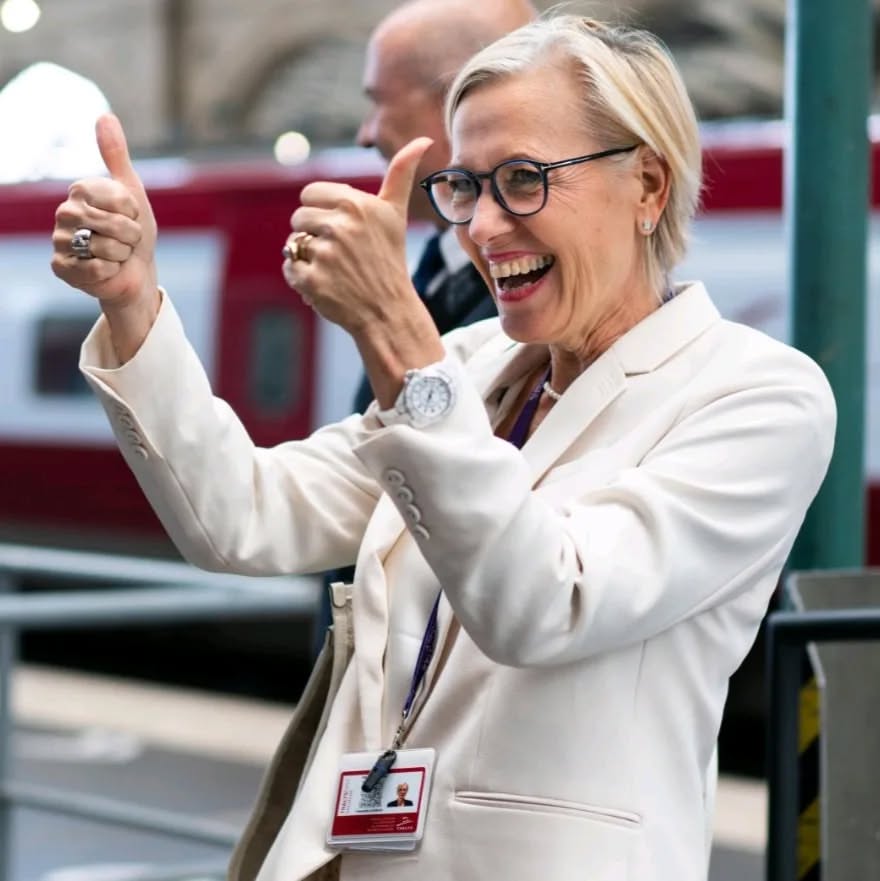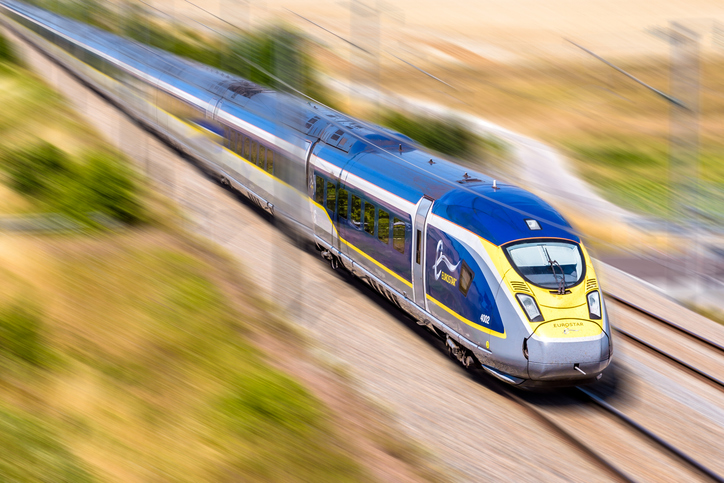Gwendoline Cazenave: Steering Eurostar Into a New Era of Sustainable Growth
As of October 2025, Eurostar CEO Gwendoline Cazenave announced a €2 billion investment in a new fleet of Alstom-built “Celestia” double-decker trains, marking the largest expansion in the company’s history. The move underscores Eurostar’s financial recovery and sustainability strategy amid growing high-speed competition in Europe. The investment positions Eurostar Group for long-term profitability and a greener transport future.
The Woman Driving Europe’s Most Ambitious Rail Revival
Gwendoline Cazenave, the French executive leading Eurostar Group, is redefining what leadership in European transport looks like. Since taking over in 2022, Cazenave has guided the company through post-pandemic turbulence, Brexit border complexities, and now—one of the most significant infrastructure investments in the history of European rail.
According to Railway Pro, Eurostar has ordered 50 new Alstom “Avelia Horizon” double-decker trains branded Celestia worth €2 billion ($2.1 billion). The new fleet will begin replacing older models by 2030, increasing passenger capacity by 30% and slashing carbon emissions per journey.
This bold investment comes at a pivotal time. As the world seeks greener travel solutions, Eurostar’s pivot toward sustainability is both a climate statement and a financial strategy.

Gwendoline Cazenave, CEO of Eurostar,
Who Owns Eurostar — and Is It Profitable?
Eurostar is majority-owned by Caisse de dépôt et placement du Québec (CDPQ) and SNCF Voyageurs, with smaller stakes held by Federated Hermes Infrastructure and SNCB, Belgium’s national railway. Following its merger with Thalys in 2022, the unified Eurostar Group became Europe’s most powerful international rail operator.
The company, long plagued by debt and high fixed costs, returned to profitability in 2024, driven by record passenger numbers and reduced operating expenses. Cazenave confirmed in interviews that Eurostar had “turned a corner,” projecting annual revenues exceeding €2 billion by 2026. Cazenave now joins the ranks of some of the world’s most influential female executives — leaders like Mary Barra, Jane Fraser, and Emma Walmsley — who are shaping the next era of business leadership through strategy, innovation, and resilience.
According to Financial Times reporting, Eurostar carried over 20 million passengers in 2024, a significant rebound from pre-pandemic levels. The Celestia fleet order aims to meet that surging demand while improving energy efficiency and reducing maintenance costs.
Inside Eurostar’s €2 Billion Bet on the Future
The new Celestia trains, developed by Alstom, will be the most energy-efficient in Eurostar’s history, consuming 20% less electricity per seat. Built with recyclable materials and equipped for digital connectivity, they reflect Cazenave’s commitment to a modern, sustainable, and data-driven network.
But behind the scenes, this is also a financial balancing act. Large-scale capital projects like Celestia require complex financing, particularly amid Europe’s tightening infrastructure budgets. Analysts at Bloomberg Intelligence noted that the investment “positions Eurostar to compete more aggressively with airlines on both comfort and cost.”
Eurostar’s leadership team—including François Le Doze, Head of Operations has emphasized that the company’s focus isn’t expansion at any cost but “profitable growth built on passenger experience.”

A Leadership Case Study: Vision Meets Accountability
Cazenave’s leadership stands out not just for her vision but for her financial prudence. A veteran of SNCF, she has merged operational discipline with innovation, prioritizing long-term profitability over flashy expansion.
Her philosophy mirrors the challenge facing many European CEOs today: balancing green imperatives with shareholder returns. As she told Les Echos, “Sustainability is not just a responsibility—it’s a competitive advantage.”
That strategy appears to be paying off. Eurostar’s net margins are improving, and its operational resilience after weathering Brexit, COVID-19, and now cyber threats, has positioned it as a model for how legacy transport brands can modernize under pressure.
The Financial and Legal Challenges Ahead
Despite the optimism, Eurostar faces ongoing regulatory and legal hurdles tied to post-Brexit border protocols, station access rights, and EU transport standards. According to Reuters, the company continues to lobby for harmonized border screening to prevent delays that could cost millions in lost revenue annually.
Meanwhile, financing the Celestia project adds long-term debt obligations that must be balanced against revenue growth. Analysts warn that if passenger demand slows, Eurostar could face repayment pressures by the end of the decade.
However, as one transport policy expert at the London School of Economics noted, “Eurostar’s latest investment signals confidence, not risk. It shows Europe’s flagship rail operator is betting on cross-border rail as the travel mode of the future.”
The Road (and Rails) Ahead
Cazenave’s Eurostar is more than a transport company it’s becoming a symbol of post-Brexit European cooperation and a test case for sustainable infrastructure investment. With the €2 billion Celestia fleet on the horizon, Eurostar’s transformation could redefine high-speed travel for the next generation.
In an era where environmental accountability meets economic uncertainty, Gwendoline Cazenave is proving that leadership is not just about keeping the trains running on time—it’s about keeping the future on track.














